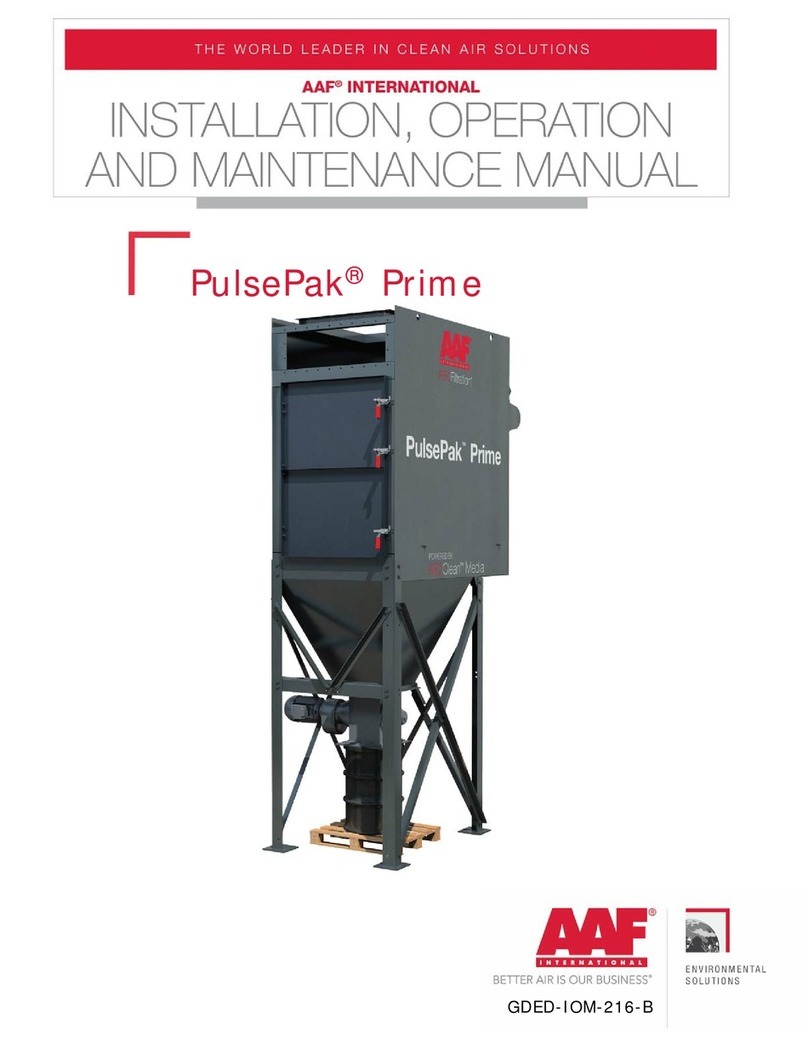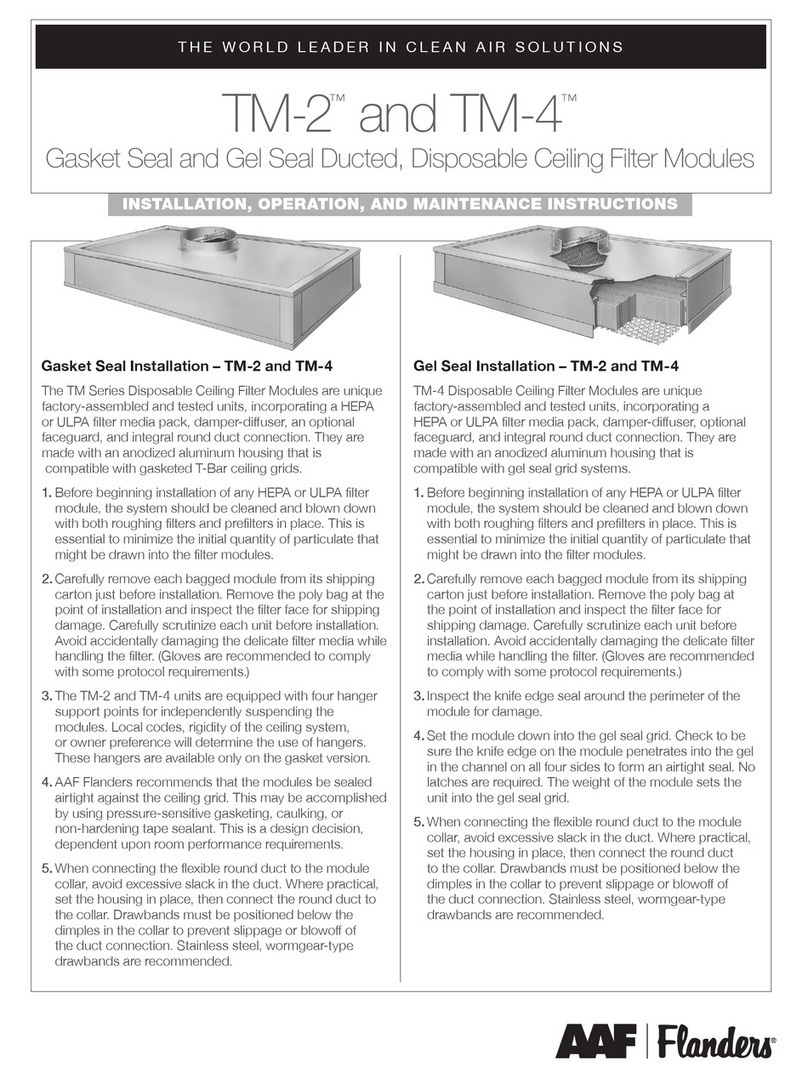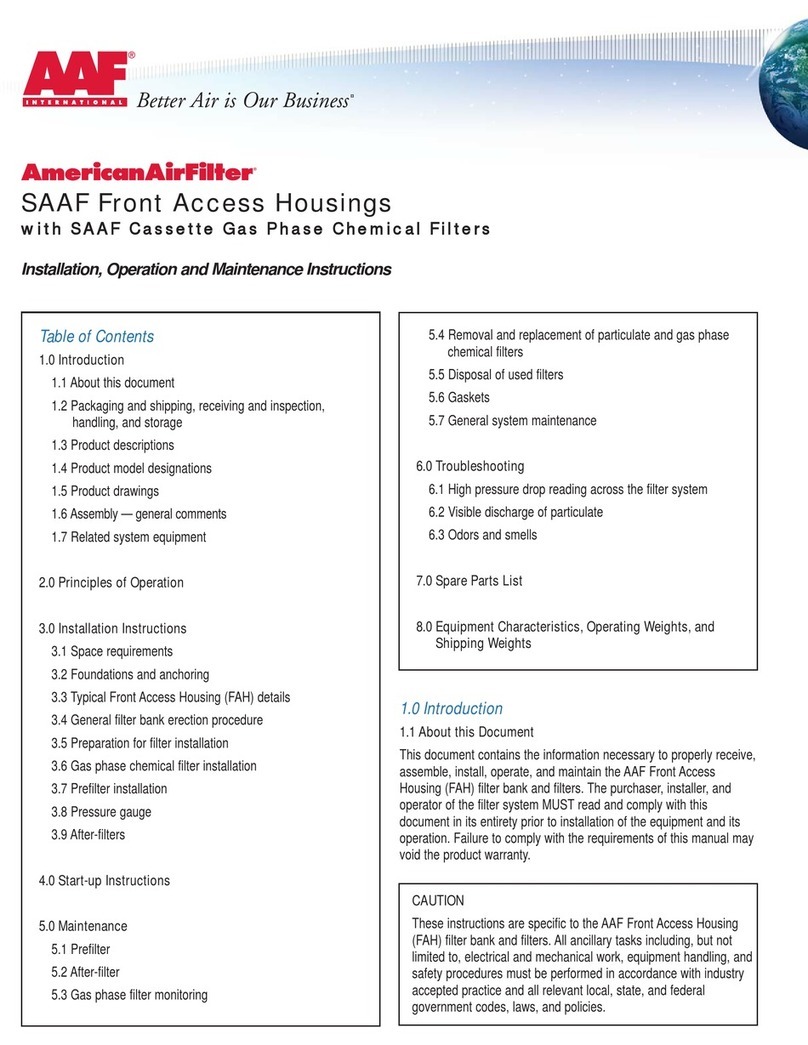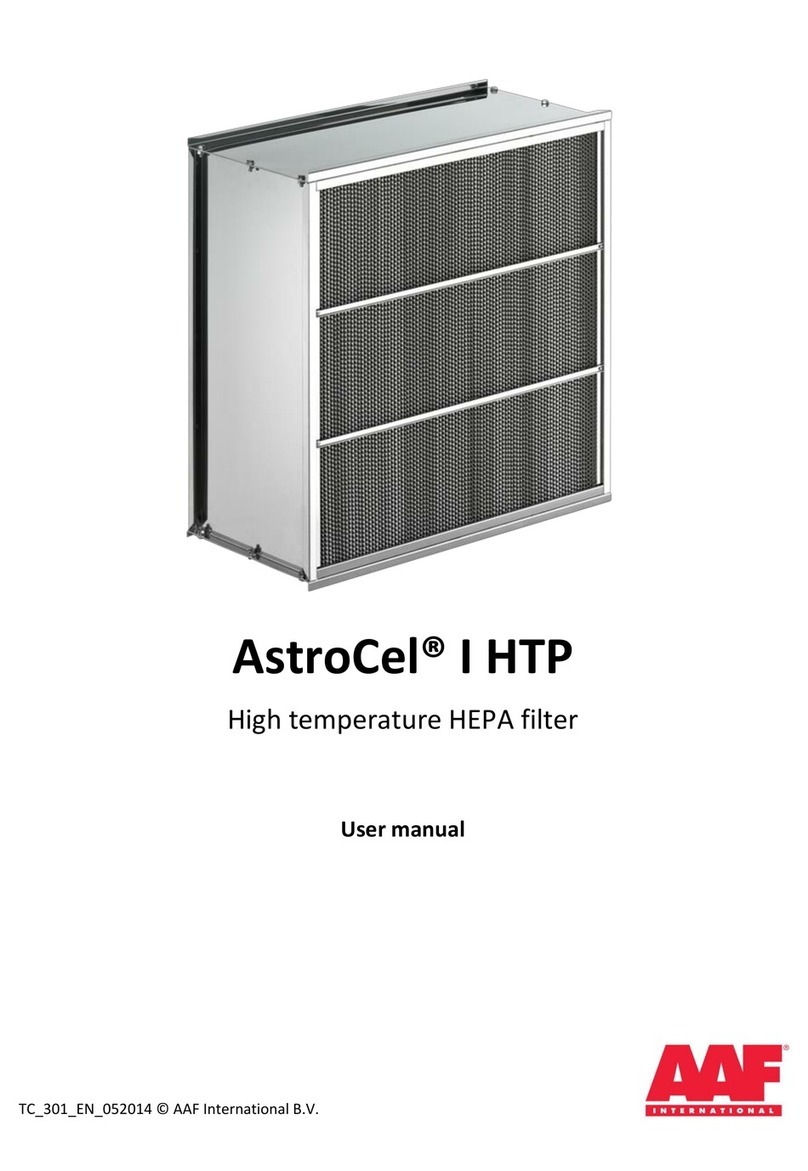
5
© 2016 American Air Filter Company, Inc. Any use of the text or images
this document contains, without permission of American Air Filter
Company, Inc., is prohibited. FabriPulse and AAF are registered
trademarks of American Air Filter Company, Inc. d/b/a AAF
International.
1INTRODUCTION
This document contains the information necessary to properly receive,
assemble, install, operate, and maintain the AAF®FabriPulse®BinVent filter system
and filters. The purchaser, installer, and operator of the filter system MUST read
and comply with this document in its entirety prior to installation of the equipment
and its operation. Failure to comply with the requirements of this manual may void
the product warranty. The information and guidelines contained in this manual are
not exhaustive, and additional or different precautions, measures, training, etc. may
be needed depending on the specific circumstances.
CAUTION
These instructions are specific to the AAF FabriPulse BinVent filter system and
filters. All ancillary tasks including, but not limited to, electrical and mechanical
work, equipment handling, and safety procedures must be performed in
accordance with industry accepted practice and all relevant local, state, and
federal government codes, laws, and policies.
2SAFETY
2.1 Safety statement
The air cleaning equipment supplied by AAF International ranges from very
large multiple-component assemblies which require significant and complex,
rigging, handling and assembly on-site, to small compact assemblies that are easily
handled and maneuvered. Many of the dust collectors will require electrical
connections, compressed air connections, and high speed rotating equipment.
When dealing with dust collection equipment, personnel safety must be the
highest priority of all involved, including riggers, installers, operators, users, and
maintenance personnel. Those responsible on-site shall review the details of the
equipment beforehand and develop a plan for dealing with all stages of the
installation, from receipt of the equipment on-site to start-up, commissioning, and
hand-over. All applicable health, safety, and environmental (“HSE”) rules,
regulations and legislation shall be fully complied with, at all times.
2.2 Safe working practices and staff training
AAF International is fully committed to the safety of its employees and those of
its customers. In this spirit the following guidelines are offered for the consideration
of those responsible:
All personnel shall receive safety training specific to the site, the task, and the
conditions under which the work will be conducted.
































